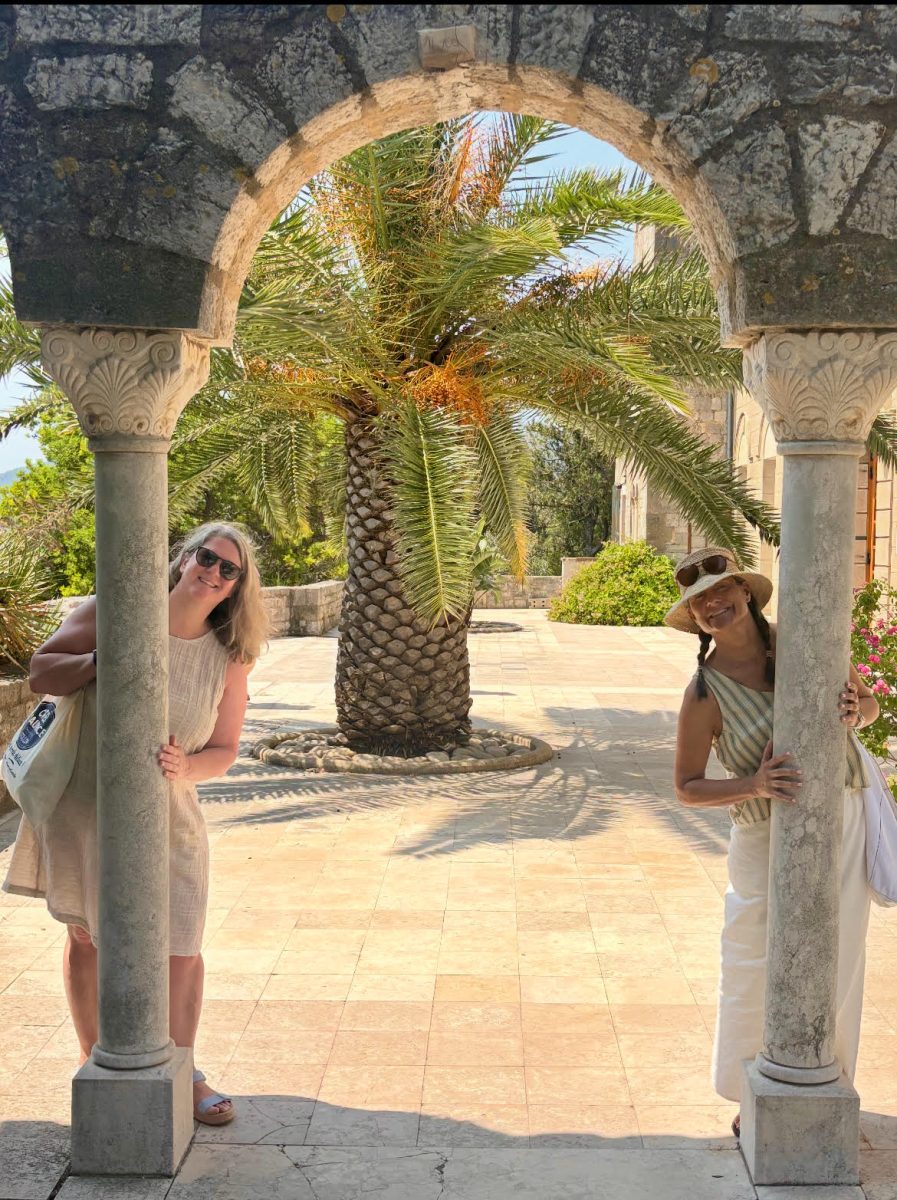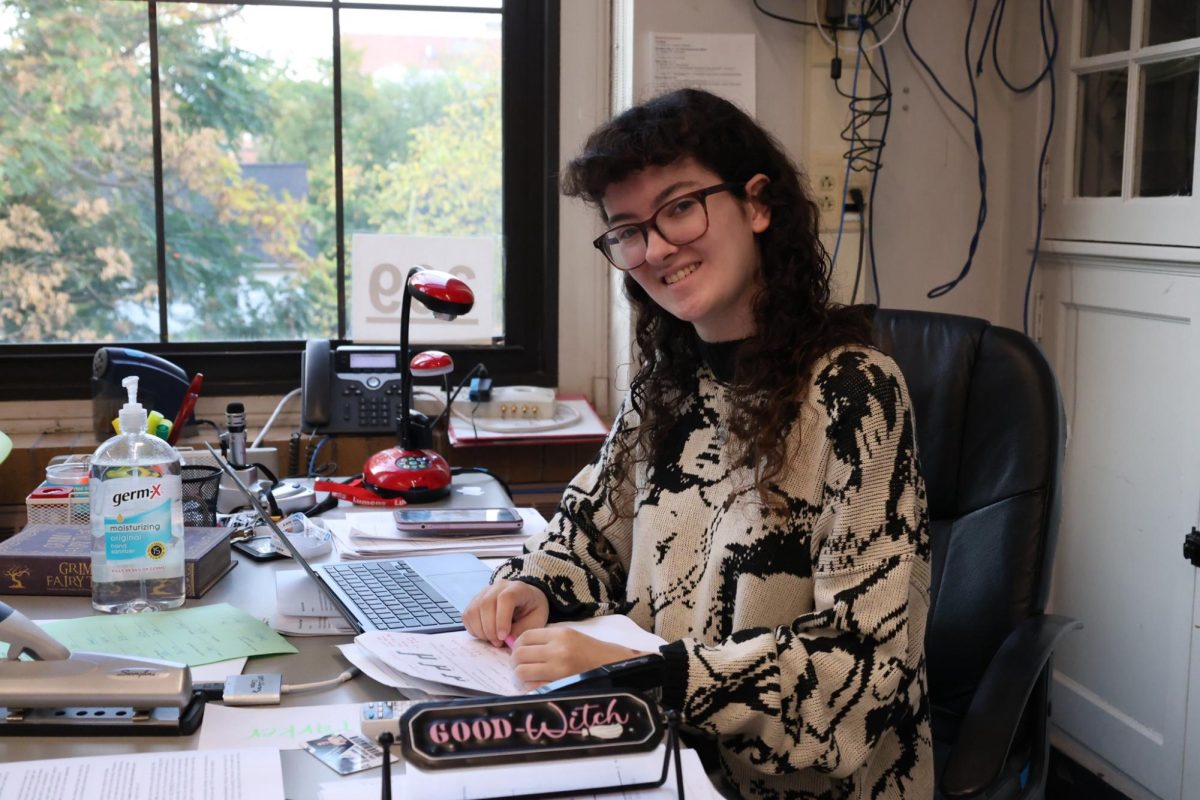Every day, as she walks to and from her bus stop, Charlotte Rotenberg makes note of the ongoing construction projects. Whether it’s a new University of Michigan building or a fancy condominium, there seems to be a new project every day.
But there is one project in particular that Rotenberg pays attention to more than the rest: 121 Catherine St.
The site, located just two blocks from CHS, was once a parking lot. Now it is a deep hole in the ground, seemingly a mess of pipes and machinery. In actuality, it’s a part of the City of Ann Arbor’s plan to provide more affordable housing for its residents. After breaking ground this April, 121 Catherine St. is set to become a six-story affordable housing building with 63 residential units and open community spaces on the ground floor.
The first time Rotenberg learned about this project was in the Youth Civic & Community Engagement CR. For a semester, every Tuesday and Thursday she would walk to city hall and learn about different facets of the city, including housing. Rotenberg got the opportunity to hear from members of the Housing Commission who explained their work taking underused, city-owned lots such as 121 Catherine St. and turning them into new housing.
“When I heard about the project happening so close to Community I thought, ‘this is so cool,'” Rotenberg said. “I’d heard about affordable housing before taking the CR, but it gave me a much better understanding of what it really is and how much it is needed.”
By definition, affordable housing is housing made for a targeted community, usually those with lower annual incomes. It is housing — unlike most — created without the intention of making a profit, but instead merely to provide homes to the people who need them.
In just the past few years, the price of living in Ann Arbor has increased exponentially. More than half of the people who work in Ann Arbor don’t live within city limits, forcing them to make daily commutes. These facts alone raise red flags to the city, signaling that something needs to be done and it is units like 121 Catherine St. that may just be able to address them.
Arin Yu, a Planning Specialist with the Ann Arbor Housing Commission, sees the project at 121 Catherine St. as the beginning of a much bigger change.
“The city needs more housing in general,” Yu said. “Whether it’s affordable, market price or for middle-sized families, we need it. But this project is about more than just housing.”
For 121 Catherine St., many factors are being taken into consideration: affordability, community engagement, arts and sustainability. Using an application process, the building is set to house people coming out of homelessness as well as artists and creatives. Not only will the building have typical apartments, it is set to heavily incorporate the work of local artists into its design. Also, to stay in line with Ann Arbor’s carbon neutrality plan, the building is going to be made of sustainable materials and will have an underground geothermal heating system.
Besides art and sustainability, historical significance is also being taken into consideration. Located right across the street from the Kerrytown Market & Shops, 121 Catherine St. is in an area rich with history.
For the majority of the 21st century, what is now “Kerrytown” was a predominantly Black neighborhood. From Ann St. to N. Fourth Ave. there was a thriving business district. Just steps from 121 Catherine St. were community organizations such as the Colored Welfare League, Jones Elementary School and the Dunbar Community Center.
However, as a consequence of the desegregation of Ann Arbor Public Schools and the fair housing policies of the 1960s, many community members were pushed out. And later, with new investments, the area was completely gentrified.
Currently, there is little recognition of the Black community that was once in the area.
In efforts to change this, the Housing Commission has been in partnership with both Avalon Housing and the Community Leadership Council (CLC), whose members are multi-generational Black former and current residents of the neighborhood. The CLC decided that a portion of the community space as well as the building’s name will be dedicated to historical recognition of the area. Named after the Dunbar Community Center — a social and social services resource for the city’s Black community in the mid-1900s — 121 Catherine St. will be known as “The Dunbar Tower.”
This building is from the community for the community. In a time when housing prices continue to climb, it is fulfilling a great need. And though The Dunbar Tower isn’t projected to be done with construction until 2026, it is one of many more to come.
“It takes a lot of time and effort, pushing through all the different difficulties of trying to do affordable housing,” Yu said. “But it is important to show people that not only is it feasible, but you can create an affordable housing building that has beautiful artwork, that has strong meaning, that ties to the community and is also sustainable. You really can do it all.”
Now, when Rotenberg takes her daily walks to the bus stop she continues to watch the progress at 121 Catherine St. Whether they are pouring concrete or drilling in pipes she watches. She watches progress towards a more affordable Ann Arbor.










